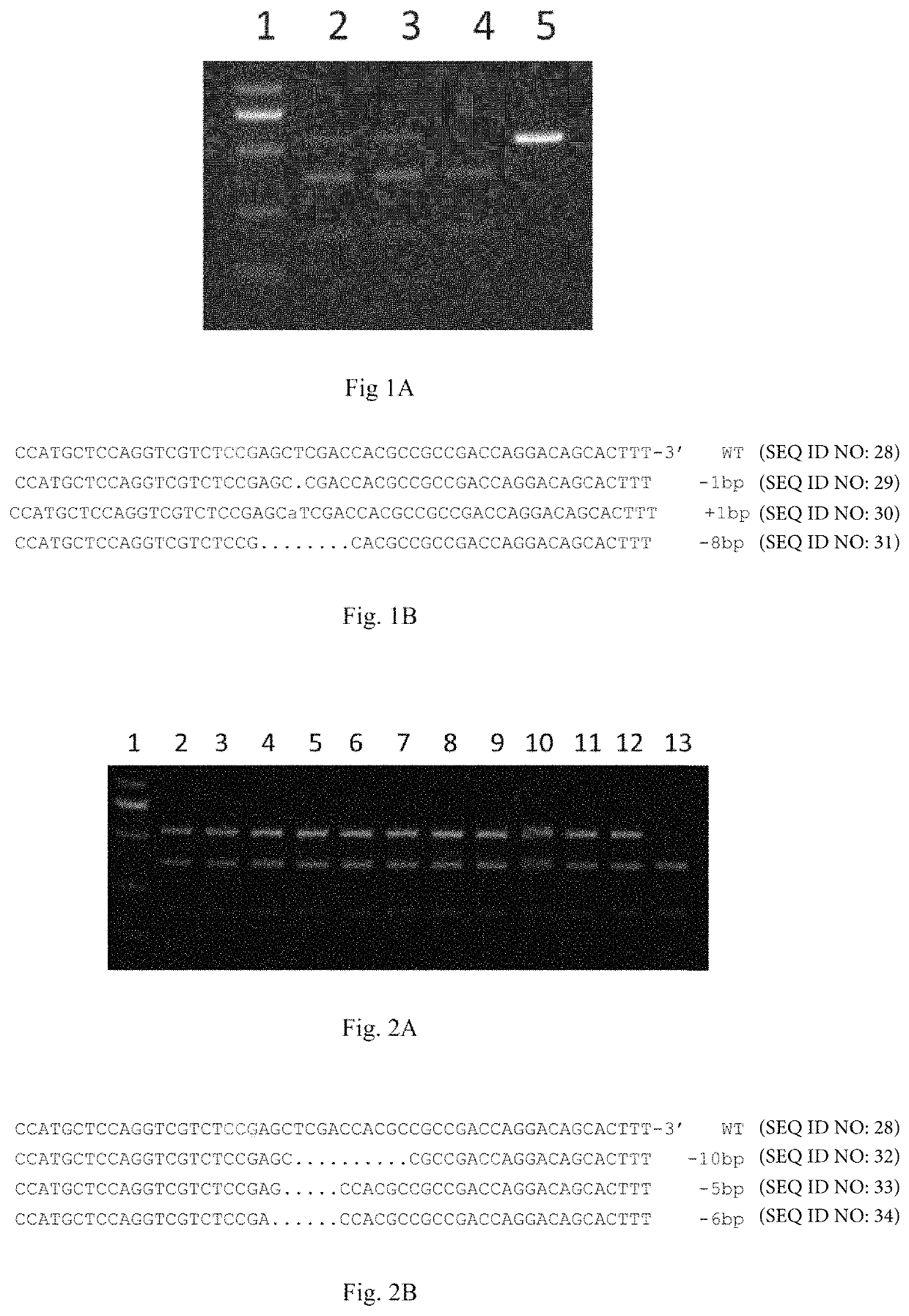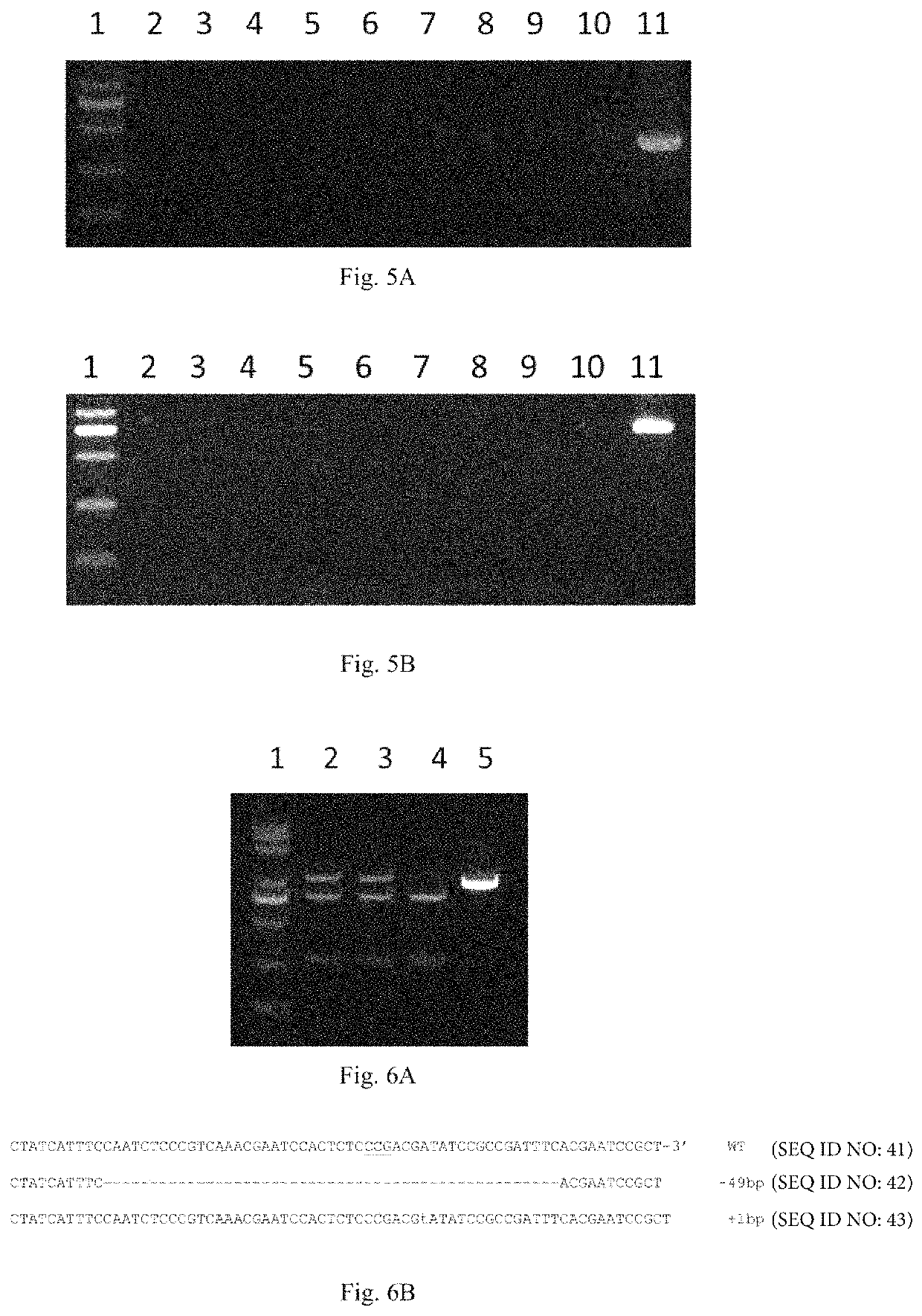Method for conducting site-specific modification on entire plant via gene transient expression
a technology of gene transient expression and whole plant, which is applied in the field of site-specific modification of whole plant through gene transient expression, can solve the problems of many defects in the method of genetically improving a crop or gene modification, the cost of controlling a transgenic technique or product is high, and the market is not well-adjusted to the extent of commercialization
- Summary
- Abstract
- Description
- Claims
- Application Information
AI Technical Summary
Benefits of technology
Problems solved by technology
Method used
Image
Examples
example 1
cted Editing of Maize Endogenous Gene ZmIPK Via the Pollen Tube Approach and the Shoot Apex Regeneration Approach
[0075]I. Design of the Target Fragment: Target-C1
[0076]
Target-C1:(SEQ ID NO: 11)5′-CCGAGCTCGACCACGCCGCCGAC-3′;(position 393-415 of the gene ZmIPK as shown inGenbank No. AY172635).
[0077]II. Preparation of pZmU3-gRNA Plasmid and pBUE411 Plasmid Containing C1 Site
[0078]C1 is the DNA sequence for the RNA that can complementarily bind to target-C1.
[0079]The following single-stranded oligonucleotides with sticky ends (underlined) were synthesized:
[0080]
C1-1F:(SEQ ID NO: 7)5′-AGCAGTCGGCGGCGTGGTCGAGCT-3′;C1-2F:(SEQ ID NO: 8)5′-GGCGGTCGGCGGCGTGGTCGAGCT-3′;C1R:(SEQ ID NO: 12)5′-AAACAGCTCGACCACGCCGCCGAC-3′.
[0081]Double-stranded DNA with sticky ends was formed through annealing between C1-1F / C1R, and inserted between the two BbsI restriction sites in pZmU3-gRNA plasmid, resulting in a pZmU3-gRNA plasmid containing C1 site. The positive plasmid was verified by sequencing. A recombinan...
PUM
| Property | Measurement | Unit |
|---|---|---|
| temperature | aaaaa | aaaaa |
| concentration | aaaaa | aaaaa |
| length | aaaaa | aaaaa |
Abstract
Description
Claims
Application Information
 Login to View More
Login to View More - R&D
- Intellectual Property
- Life Sciences
- Materials
- Tech Scout
- Unparalleled Data Quality
- Higher Quality Content
- 60% Fewer Hallucinations
Browse by: Latest US Patents, China's latest patents, Technical Efficacy Thesaurus, Application Domain, Technology Topic, Popular Technical Reports.
© 2025 PatSnap. All rights reserved.Legal|Privacy policy|Modern Slavery Act Transparency Statement|Sitemap|About US| Contact US: help@patsnap.com



